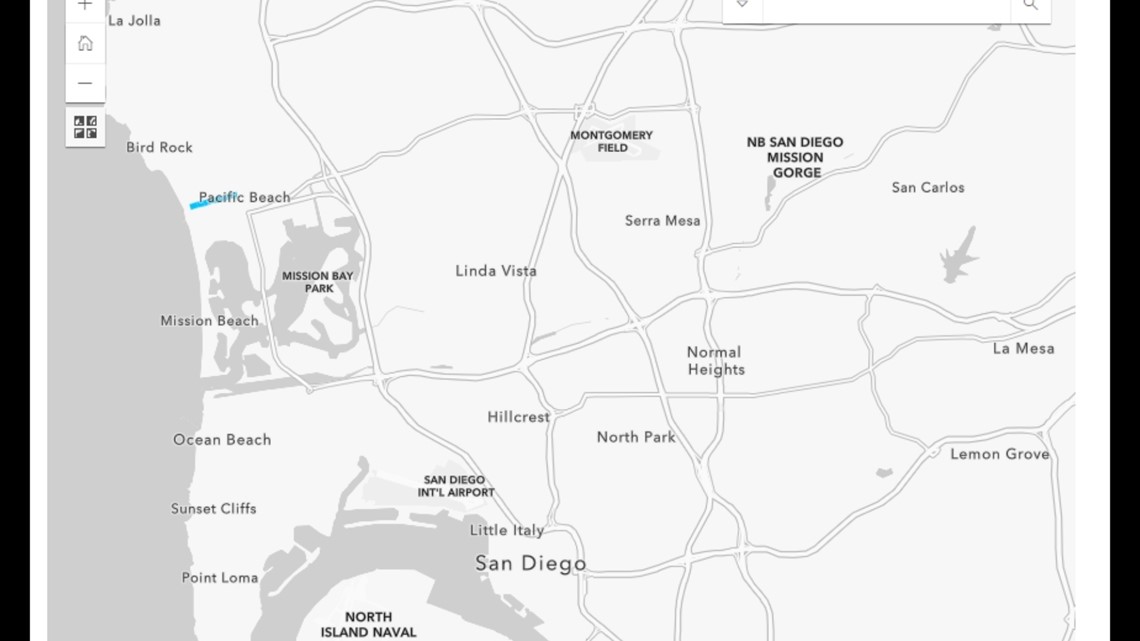SAN DIEGO — In April 2020, in hopes of stemming the rising tide of COVID, the city of San Diego closed a mile-stretch of Diamond Street in Pacific Beach, from the seawall to Haines Street.
The closure was part of the city's Slow Streets Program, an initiative, according to the city's website, "intended to create safe shared spaces allowing residents get around their neighborhoods for essential travel while maintaining physical distance from others. Slow Streets San Diego supports the City's Vision Zero Program, which aims to make our streets and sidewalks safer for all road users."
Two years later, Diamond Street is the only street on the program city-wide and residents say the street should be reopened and traffic should no longer be diverted to other nearby roads.


But, residents say the city is slow to respond and even slower to act.
"I see no reason for these signs or these streets to be blocked," said Larry Phelps, who lives north of diamond.
He emailed CBS8, saying he's concerned about a number of issues.
For starters, he feels like Diamond street isn't the right place for something like this, yet city leaders chose it without any input from himself or his neighbors.
"It's a major street three blocks north from Garnet Avenue. We've got enough problems with parking and driving without shutting one down for no reason at all."
Phelps also pointed out the confusion surrounding Diamond, with many drivers unsure if they can be on it or not.
"So you have people walking down this street and then cars coming down. I think that's a dangerous situation," said Phelps.
Another neighbor, Cheri Tabb, reached out to CBS 8 as well.
While she likes the purpose of this program, she's upset about the traffic it creates on other streets as people try to get around it.
"So the overflow winds up in the neighborhoods and we wind up absorbing that," said Tabb.
Despite their opposition, not everyone feels the same way.
According to a survey from the city's Safe Streets webpage, the vast majority, or 73 percent of the 233 people who were surveyed wanted Diamond Street to stay closed after the "stay-at-home" order while 21 percent of respondents said the city should ditch the program, the remaining five percent said the program should end after the stay-at-home order was lifted.
Trenton Austin rides his bike on Diamond Street every day. He thinks it should be closed permanently.
Toni Hundley lives on Diamond as well.
She liked it at first, but says the longer it’s stayed closed, the more combative people have been.
"I live here. I drive down the street and people are flipping me off. They yell at me, they won't get out of the way when I'm trying to drive to my house," said Hundley.
One thing is certain, neighbors are unsure what the City's plans are for Diamond Street.
CBS 8 reached out to the Mayor's Office about the street closure as well as District 2 Councilmember Jenn Campbell.
In a statement, city spokesperson Anthony Santacroce told CBS 8, "Diamond Street is the last remaining street that is part of the City's Slow Streets Program started during the thick of the COVID pandemic. This initiative is intended to create safe shared spaces allowing residents get around their neighborhoods for essential travel while maintaining physical distance from others. Slow Streets San Diego supports the City's Vision Zero Program, which aims to make our streets and sidewalks safer for all road users."
In regards to complaints, Santacroce said more people have expressed support for the project than have complained about it and there is no determination as to when or if Diamond will reopen.
Meanwhile, Councilmember Campbell's Office hasn't responded.
WATCH RELATED: 'Sexy Streets' initiative hopes to tidy up San Diego roads
WATCH RELATED: A rocky road for Clairemont residents who look to the city for road repairs

